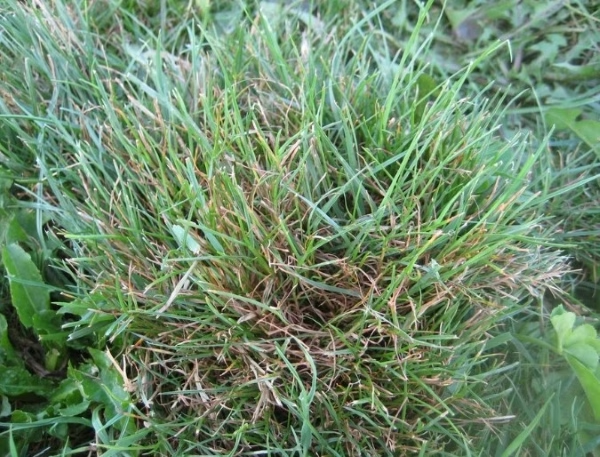
Rough Bluegrass
Botanical Name
:
Poa trivialis
Plant Type
:
Cool-season perennial grass
Seasons
:
Active growth during spring and fall, tends to go dormant, and may turn brown during hot summer months
Sun Level
:
2–6 hours of sun daily
Ideal Soil Temperature for Planting
:
Germinates best when soil temperatures are below 70°F (21°C)
Soil Type
:
Prefers moist, well-draining nutrient-rich soils
Hardiness Zones
:
3–7 (USDA)
Germination
:
7 to 14 days under optimal conditions.
P.H. Level
:
Approximately 6.0 to 7.0
Water/Irrigation
:
Requires consistent moisture and may struggle during droughts
Fertilization
:
Apply balanced fertilizers to maintain nutrient-rich soil conditions
Habit
:
Spreads via stolons (above-ground runners), forming dense, mat-like patches
Final Plant Height
:
6–12 inches (if left unmowed); typically mowed to 2–3 inches in lawns
Spread
:
Aggressively spreads through stolons, covering ground rapidly
Spacing
:
For turf applications, sow at 1 to 2 pounds per 1,000 square feet for even coverage
Flowers
:
Produces inconspicuous flower spikes primarily in late spring to early summer
Attracts
:
Food plant for caterpillars, butterflies, sun beetles
Uses
:
Shade lawns, overseeding for winter color, erosion control, ornamental use in moist areas
Companions
:
Not commonly mixed with other grass species due to its aggressive growth habit
Pruning
:
Requires regular mowing to maintain desired height, typically kept at 2 to 3 inches for general turf areas
Toxicity
:
Non-toxic to humans and pets
Pests
:
Generally not prone to significant pest issues, maintaining healthy turf can prevent potential problems
Diseases
:
Susceptible to diseases like brown patch and dollar spot, especially under humid conditions
Fun Fact
:
Despite its name, Rough Bluegrass has a fine texture and a light green color, which creates a patchy appearance in lawns when mixed with darker green grass species
Additional Info
:
While Rough Bluegrass can be useful in specific applications, such as shaded, moist areas, it is often considered undesirable in home lawns due to its tendency to become dormant during heat and its patchy growth habit.
Proper lawn management practices, including appropriate irrigation and mowing, can help manage its presence.
Botanical Name
:
Poa trivialis
Plant Type
:
Cool-season perennial grass
Seasons
:
Active growth during spring and fall, tends to go dormant, and may turn brown during hot summer months
Sun Level
:
2–6 hours of sun daily
Ideal Soil Temperature for Planting
:
Germinates best when soil temperatures are below 70°F (21°C)
Soil Type
:
Prefers moist, well-draining nutrient-rich soils
Hardiness Zones
:
3–7 (USDA)
Germination
:
7 to 14 days under optimal conditions.
P.H. Level
:
Approximately 6.0 to 7.0
Water/Irrigation
:
Requires consistent moisture and may struggle during droughts
Fertilization
:
Apply balanced fertilizers to maintain nutrient-rich soil conditions
Habit
:
Spreads via stolons (above-ground runners), forming dense, mat-like patches
Final Plant Height
:
6–12 inches (if left unmowed); typically mowed to 2–3 inches in lawns
Spread
:
Aggressively spreads through stolons, covering ground rapidly
Spacing
:
For turf applications, sow at 1 to 2 pounds per 1,000 square feet for even coverage
Flowers
:
Produces inconspicuous flower spikes primarily in late spring to early summer
Attracts
:
Food plant for caterpillars, butterflies, sun beetles
Uses
:
Shade lawns, overseeding for winter color, erosion control, ornamental use in moist areas
Companions
:
Not commonly mixed with other grass species due to its aggressive growth habit
Pruning
:
Requires regular mowing to maintain desired height, typically kept at 2 to 3 inches for general turf areas
Toxicity
:
Non-toxic to humans and pets
Pests
:
Generally not prone to significant pest issues, maintaining healthy turf can prevent potential problems
Diseases
:
Susceptible to diseases like brown patch and dollar spot, especially under humid conditions
Fun Fact
:
Despite its name, Rough Bluegrass has a fine texture and a light green color, which creates a patchy appearance in lawns when mixed with darker green grass species
Additional Info
:
While Rough Bluegrass can be useful in specific applications, such as shaded, moist areas, it is often considered undesirable in home lawns due to its tendency to become dormant during heat and its patchy growth habit.
Proper lawn management practices, including appropriate irrigation and mowing, can help manage its presence.
Written by Salome Wapukha – https://www.linkedin.com/in/salome-wapukha-556700193/

